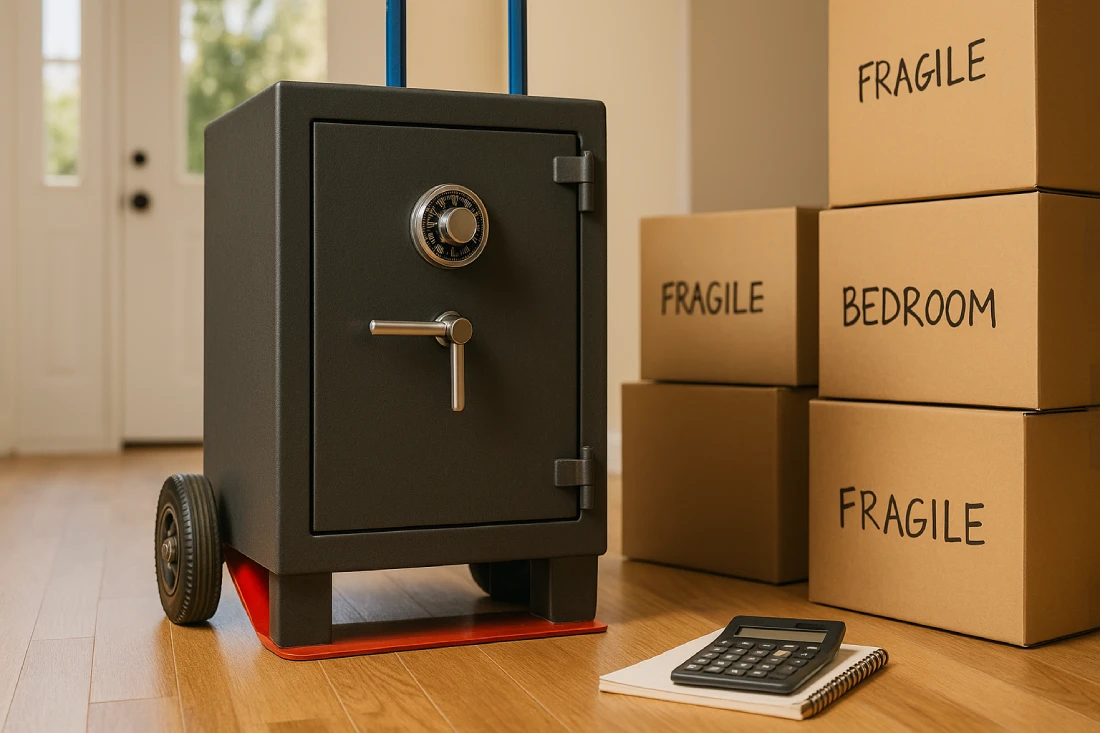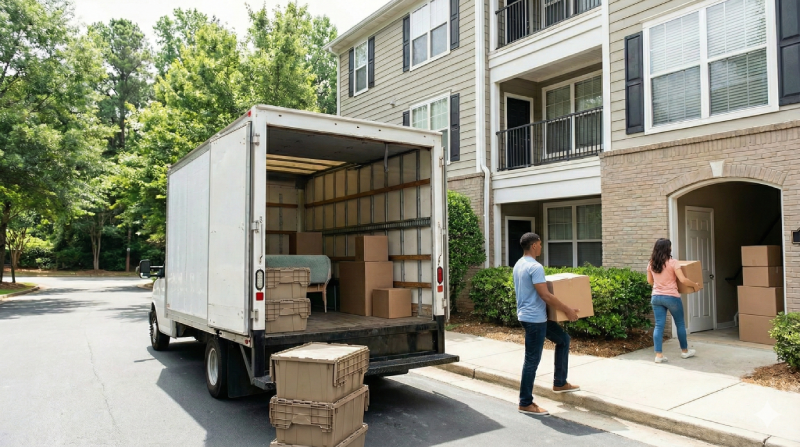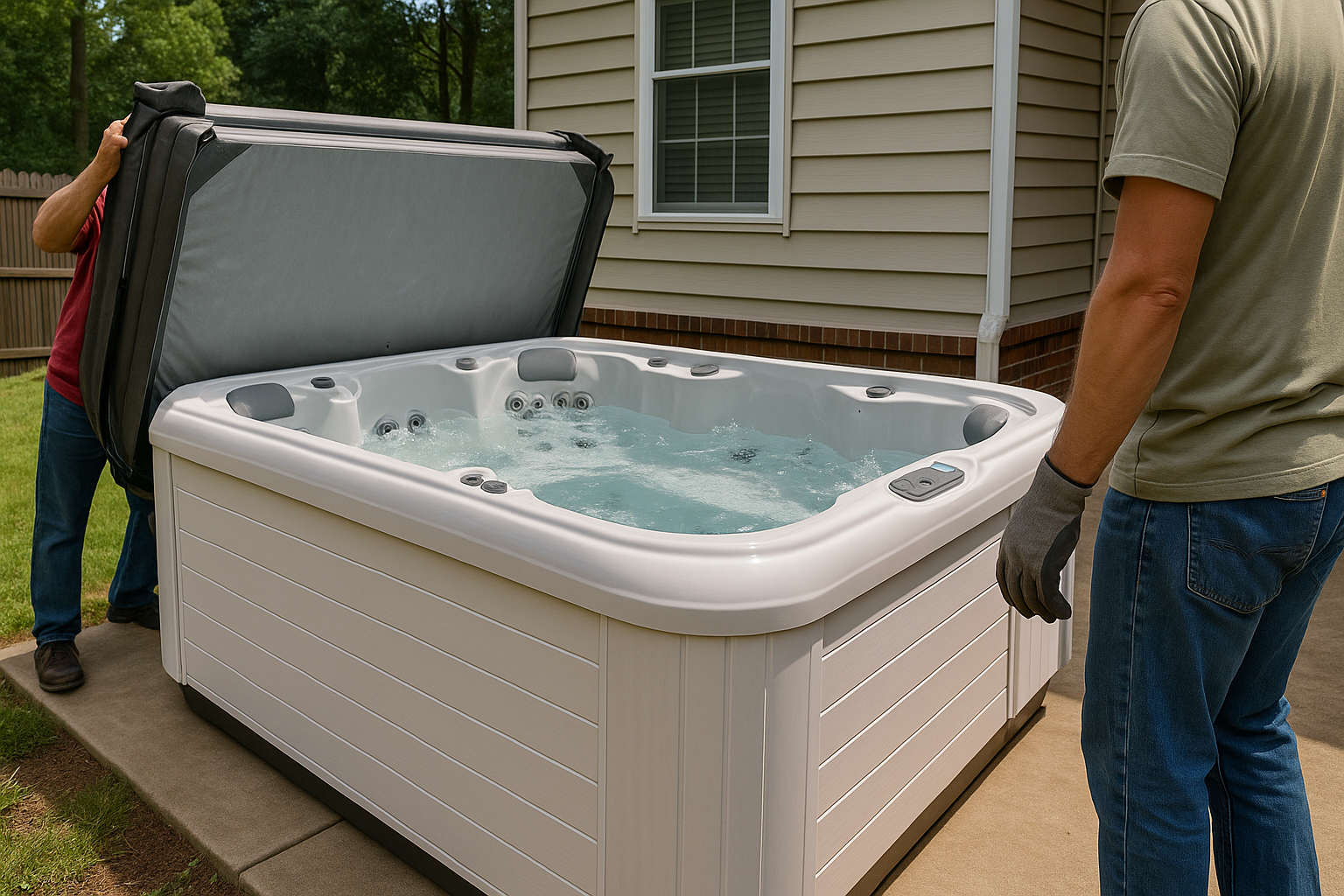Moving with kids means preparing them emotionally, managing the logistics, and helping them settle in afterward. It can feel overwhelming, but with the right approach, you can make the process smoother. Discover strategies and tips to reduce stress for the whole family and ensure your children feel secure and ready to thrive in their new home.
Before the Move: Preparing Your Child Emotionally and Logistically
A successful family move starts long before you pack the first box. Talking openly and preparing ahead of time are important steps to help your children move successfully.
How to Tell Your Kids We're Moving (Age-Specific Advice)
When to tell them: Experts suggest you tell your children as soon as the move is final. Being unclear can make them feel anxious.
- Toddlers and Preschoolers (0–4): Keep it simple and positive. Focus on the idea that the family stays together. For example: "We are going to move to a new house, and all of our family will go together! You get to have a new bedroom where all your toys will be." Use books and play (like moving dolls or toy houses) to explain the change.
- School-Age Kids (5–12): Be honest and explain the main reason for the move (like a new job or a bigger house). Tell them you know they will miss friends and school. Validate their feelings. Let them help research the new area, such as looking up the new school playground or a local park online to build excitement.
- Teens (13–18): Talk to them like adults. Explain the reasons for the move, including any job or financial reasons. Let them help make decisions, like choosing paint colors or furniture layout for their new room. Focus on what they will gain: new activities, better facilities, or new ways to socialize.
Helping Your Child Cope Emotionally with Moving
For many children, moving house with kids makes them feel less secure. Your support and attention are important for helping them cope well.
- Acknowledge and Validate Feelings: Sadness, anger, and anxiety are normal reactions. Helping child cope with moving starts when you listen and confirm their emotions. Say, "It's understandable to feel sad about leaving your best friend," instead of telling them not to worry.
- Maintain Routine: Moving tips for families always stress having a steady schedule. Stick to familiar mealtimes, bedtimes, and family rituals as much as possible to give them stability during the move.
- Keep Familiar Comforts Accessible: Make sure favorite blankets, stuffed animals, or comfort books are packed last and unpacked first. This gives them something familiar in the new space.
- Plan Future Contact: Help your child exchange contact information with old friends. Scheduling a video call or a visit soon after the move confirms that important relationships will continue.
Moving Checklist: School and Health Records
Especially for an interstate move, gathering and transferring records is an important logistical step.
- School Records
- Request official transcripts, report cards, and transfer any special education documentation (IEP/504 plans). Contact the new school immediately for enrollment procedures.
- Medical Records
- Obtain copies of immunization records, dental records, and a summary of recent checkups.
- New Providers
- Research and establish a new primary care provider (a "medical home"), dentist, and pediatricians before you arrive, if possible.
- Special Needs
- If your child has an IEP or 504 plan, contact the new school district to make sure "comparable services" are ready to start promptly upon arrival.
Packing Strategies and Moving Day Logistics
Moving day is less disruptive when you plan well and always prioritize safety. Knowing beforehand how long it takes to move will help you give yourself enough of a buffer to proceed in a calm and collected way.
Smart Packing for Families
- Pack Kids' Rooms Last, Unpack First: This shortens the time their belongings are packed and helps them feel normal again quickly in the new house. Moving takes a few hours, depending on how big the space you currently live in is, so plan accordingly.
- The "First Night" Survival Kit: This is the important box for any family move. It should be easy to reach and contain: pajamas, a change of clothes, and important toiletries; medications and first-aid supplies; favorite books, comfort items; snacks and water bottles; and device chargers.
- Let Kids Personalize: Give your kids markers and let them decorate their own boxes. This makes them feel like they are contributing to the move and helps tell their boxes apart. Read up on how to pack clothes efficiently for moving.
Safety and Supervision on Moving Day
The best moving with kids plan for moving day is to keep them out of the busy moving areas.
- Arrange for Off-Site Childcare: The best choice for young children moving is to have a trusted friend, family member, or sitter watch them somewhere else, away from the moving activity.
- Create a Child-Safe Zone (If Off-Site Isn't Possible): If children need to stay, set aside one room (like a bedroom with a closed door) or a safe, fenced outdoor spot. This supervised area should be away from movers and equipment. Stock it with the survival kit, snacks, and activities.
- Supervise Closely: Always watch your children. Do not let them go near open moving trucks, furniture being lifted, or busy areas with dangers.
Hiring Professional Movers
Families often choose to hire professional movers because it greatly lowers parental stress. Movers also make things safer by handling big items and giving parents more time to focus on their children's emotional needs. Look for companies that communicate clearly and have flexible schedules. Before deciding, weigh the pros and cons of moving yourself vs. hiring movers. Once you decide to hire, find out how much it costs to hire a moving company to budget correctly.
After the Move: Adjusting to the New Home and Community
The move finishes only after the boxes are empty. The adjustment period takes patience and effort to get back to a stable routine.
Prioritizing the Kids' Spaces
- Set Up Their Room First: Focus on unpacking your children's bedrooms right away. Seeing their familiar beds, toys, and decorations gives them a quick sense of security and familiarity in the new space.
- Maintain Rituals: On the first night, read the same bedtime story, sing the same songs, and follow the usual routine. Steady routines help children feel that the family structure is safe.
Exploring and Connecting
- Explore Together: Make exploring the new area fun. Visit the local library, a nearby park, or a community center. This casual effort helps the neighborhood feel less scary and more like home.
- Make New Connections: Help your child get involved right away. Signing them up for a sport, club, or art class is the fastest way to make new friends and build a social life outside the family.
- School Onboarding: Keep talking openly with your child's new teacher and counselor. Ask them to see how your child is fitting in socially and doing in school during the first few weeks.
Monitoring for Stress
Adjustment can take weeks or even months. Be patient and watch for persistent signs of stress:
- Toddlers/Preschool
- Regression (e.g., increased tantrums, loss of potty training skills, clinginess).
- School-Age
- Changes in appetite or sleep, withdrawn behavior, or academic difficulty.
- Teens
- Increased irritability, changes in friend groups, risk-taking behavior, or sudden loss of interest in favorite activities.
If these problems last or become severe, ask a school counselor or pediatrician for help.
Special Situations: Interstate, Military, and Frequent Moves
Not all moves are the same. Interstate relocations and frequent moves for military or corporate families require extra planning and support to help children adjust successfully.
How to Move to a Different State
Moving from state to state involves unique challenges. For detailed advice, see our guide on moving to another state:
- School Enrollment: Contact the new district early, as enrollment requirements vary by state.
- Legal Documents: Keep birth certificates and passports accessible for registration.
- Budget Options: Consider portable containers, rental trucks, or backhauling to save money.
Frequent Moves (Military Families)
Frequent moves, especially during adolescence, can increase mental health and academic challenges. To help:
- Create a "Moving Tradition": Establish a ritual for saying goodbye and welcoming the new home.
- Digital Connections: Use video calls and social media to maintain long-distance friendships.
- Military/School Resources: Utilize Military OneSource or school liaison officers for transition support.
The Bottom Line of Moving With Kids
Moving with kids is challenging, but manageable with the right approach. Focus on three key areas: age-appropriate communication, maintaining routines and familiar items, and supporting your children's emotional needs throughout the process. Whether it's a local or interstate move, consider hiring professional movers to reduce stress and free up time for your family. Professional help allows you to focus on what matters most: Being present for your children during this transition.
Adjustment takes time. Every child adapts differently. Acknowledge their feelings, keep them safe on moving day, and help them connect through activities and school. Be patient with setbacks and celebrate small victories, like making a new friend or successfully navigating the route to school. Remember that it's normal for children to take weeks or even months to fully settle into their new environment.
While logistics matter, your family's emotional well-being is what counts most. Stay attuned to each child's unique needs and adjust your support accordingly. Keep communication open, maintain family traditions, and create new positive memories in your new home. With thoughtful planning, consistent support, and plenty of patience, this move can become more than just a change of address; it can be a positive opportunity for growth, resilience, and new beginnings for your entire family.
Frequently Asked Questions (FAQ) About Moving with Kids
What should I pack first/last for my kids?
Always pack your child's room last and make sure it is the first room unpacked in the new house. Prepare an easy-to-reach "First Night" bag with important items and comfort objects.
How can I tell if my child's stress is chronic or severe?
Look for symptoms that last or are severe, such as loss of appetite, constant withdrawal, regression (in toddlers), or loss of interest in favorite activities. Get professional help if the symptoms don't stop.
What is the most important logistical step for changing schools?
The most important step is making sure the new district gets all school and medical records. This is especially true for special education documents (IEP/504 plans) to keep services going.
How quickly should I help my child make new friends?
Help your child get involved immediately after moving by signing them up for local sports, clubs, or activities. This quick action is the fastest way to build a new social life.
What are the risks of moving frequently for children?
Frequent moves, particularly during adolescence, are linked to higher risks for mental health and school problems. You can reduce these risks by maintaining strong family routines and consistent parental support.















































.webp)








